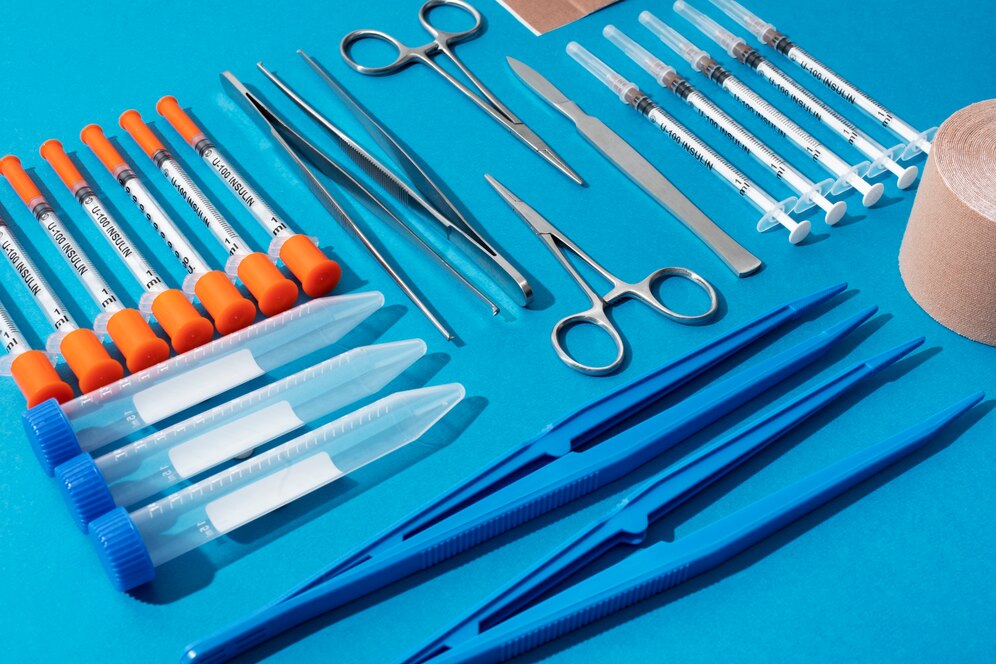When it comes to health care, technology is always getting better. The use of multi-material molding is a significant innovation that is leading to improvements in medical tools and devices. With this new way of making things, devices are safer, stronger, and more comfortable for patients and medical staff. Medical device makers can now use more than one material in one product thanks to help from big plastic companies.
In this article, we’ll explore how multi-material molding works, why it matters for medical devices, how plastic companies are playing a key role, and what the future holds for this exciting innovation.
What is Multi-Material Molding?
Multi-material molding is a process that uses two or more materials to make a single molded part. Instead of creating separate pieces and joining them together, everything is made at once using different plastics or other materials.
Here’s a simple example: imagine a medical device that has both soft and hard parts. The soft part might be used for comfort or flexibility, while the hard part adds strength and support. With multi-material molding, both parts are made at the same time, perfectly connected.
This technique helps create products that are:
- Stronger – because there are no weak joints between parts.
- Safer – because there are fewer places for bacteria to hide when there are fewer seams.
- More Reliable – since everything is made together and fits perfectly.
Why Multi-Material Molding is Important for Medical Devices
Medical devices have to be of high standard. They should be simple to clean, safe, and long-lasting ones. Multi-material molding helps to achieve these objectives in many ways:
1. Improved Safety and Hygiene
In traditional devices made from separate parts, joints can trap dirt, bacteria, or fluids. In hospitals and clinics, that’s a major risk. Different materials molded together as one, however, produces a smoother surface and less areas for bacteria to hide.
2. Better Comfort for Patients
Some devices, like oxygen masks or IV tubes, need to touch the skin. Hard plastic might cause discomfort, but soft plastic is gentle. With multi-material molding, designers can include both materials where needed—soft where it touches the skin, hard where support is required.
3. Fewer Assembly Steps
Making parts separately and then joining them takes time and increases cost. Every intersection has the potential to fail. Multi-material molding lowers this by means of component combination during manufacture. Time is saved, the amount of work required is reduced, and the quality of the end product is improved.
Real-World Examples in Healthcare
Many medical tools and devices already use multi-material molding. Here are some real examples:
– Surgical Tools
Scalpels and forceps can be molded with a strong plastic body and soft grips for better control and comfort during long surgeries.
– IV Components
Parts of IV systems can include flexible tubing and hard connectors molded together. This ensures secure connections and easier handling by nurses and doctors.
– Inhalers and Drug Delivery Devices
A lot of the time, inhalers have moving parts that need to be both flexible and rigid. With multi-material molding, all the parts of a design can fit together easily.
– Diagnostic Equipment
Putting together soft and hard materials helps make test kits and diagnostic tools more accurate, easier to hold, and more useful overall.
These are just a few examples of how this technology is already helping improve patient care.
How Plastic Companies are Driving Innovation
In the background, plastics producers are doing a lot to make multi-material molding a reality. They work directly with medical device manufacturers to develop the tools, materials, and machinery needed for this process.
1. Material Development
Plastic manufacturers are constantly creating new materials that work well together. There are plastics that are tough and rigid, as well as plastics that are soft and flexible. To be successful, you must find the right mix that will stick together when you mold it.
2. Mold Design
You must be able to precisely control where each material flows in these molds. To make molds that are just right for each project, plastic companies use cutting edge design methods.
3. Manufacturing Technology
Multi-material molding needs special machines and processes. Some methods use two injection units, while others rotate the mold during production. To meet these needs, plastics companies buy the newest molding tools.
4. Partnership with Medical Brands
Many plastic suppliers work directly with medical companies to solve design challenges. These partnerships make it possible to bring superior products to market in a more expedient and effective manner.
Future Trends in Multi-Material Molding
Especially in the medical sector, multi-material molding’s future seems bright. Listed below are some trends that we can look for:
– Smarter Medical Devices
By combining materials with sensors or electronics, devices will be more intelligent and responsive. For instance, pressure measurement or signal transmission by soft-touch buttons.
– Eco-Friendly Materials
Plastic companies are working on materials that are recyclable or biodegradable. In the future, medical tools may be safer for both people and the planet.
– Custom Fit Devices
Molding different materials allows more shapes and designs. This means medical devices can be more customized for each patient’s needs, improving comfort and results.
– Faster Production Times
Better machines and molds help manufacturers to more quickly create complicated medical components, therefore lowering delays and enhancing hospital supply.
Conclusion
By utilizing multi-material molding, the manufacturing process of medical devices is undergoing a revolutionary change. This technology makes tools stronger, safer, and more comfortable by allowing different materials to work together in one part. From inhalers to surgical instruments, this approach is already benefiting patients and medical professionals.
The future of making medical devices is brighter than ever thanks to new ideas from plastics companies. In the years to come, medical tools will be even better thanks to smarter machines, better materials, and strong partnerships.
Whether you’re in the medical field or just curious about how health technology works, it’s clear that multi-material molding is shaping the future of care.



